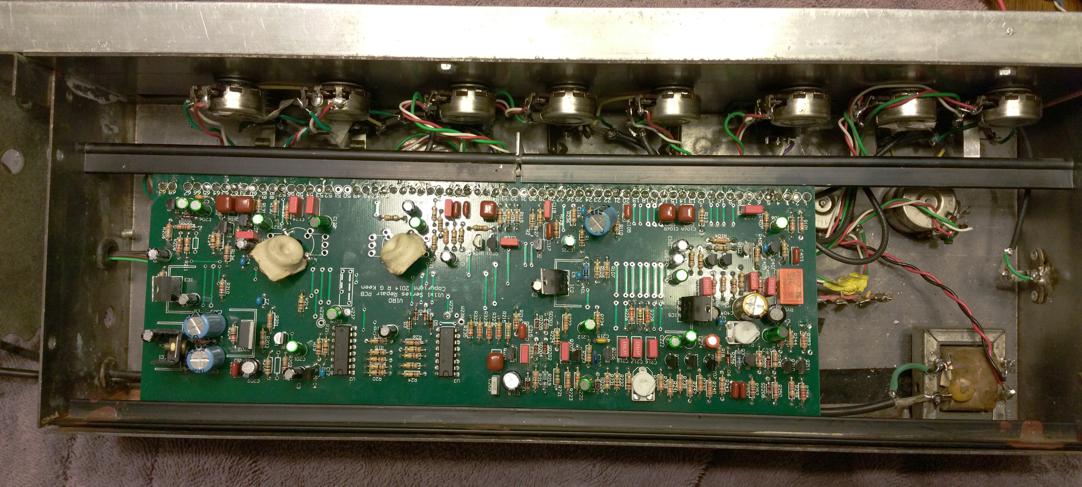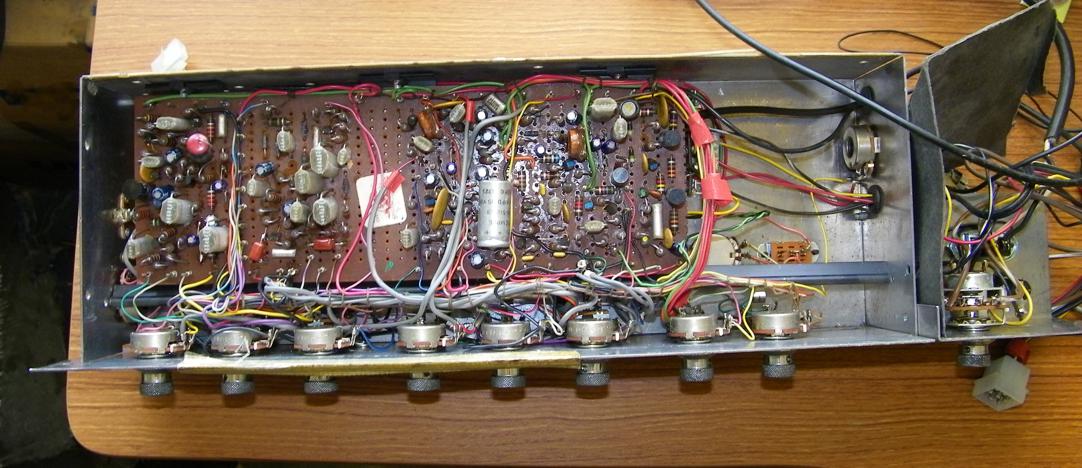Any Vox amp fanciers out there? 
OK, this is getting to be a reality. I got back enough reports from beta testers on the rebuild boards to have some assurance that someone can build one of these and retrofit it into a busted amplifier and have it work.
See:Repair boards for the following Thomas Organ Vox models have been field tested and work properly
Here's what happens in a Beatle/Guardsman/Buckingham/Viscount:

instead of this:

Another board covers the small combos and Berkeley II.
I feel like a proud pappa. :icon_lol:
I just ordered a 17"x7"x3" Bud chassis base from Mouser to put one of the boards in. I think this will just plug into the effects loop of an amp and give a Vox front end.
On other fronts, a former owner of a Vox UL730 is testing out the preamp section from a UK Vox done on the same kind of PCB. When I get word back from him, it will be possible to do a UL700 preamp front end for other amps.

OK, this is getting to be a reality. I got back enough reports from beta testers on the rebuild boards to have some assurance that someone can build one of these and retrofit it into a busted amplifier and have it work.
See:Repair boards for the following Thomas Organ Vox models have been field tested and work properly
Here's what happens in a Beatle/Guardsman/Buckingham/Viscount:

instead of this:

Another board covers the small combos and Berkeley II.
I feel like a proud pappa. :icon_lol:
I just ordered a 17"x7"x3" Bud chassis base from Mouser to put one of the boards in. I think this will just plug into the effects loop of an amp and give a Vox front end.
On other fronts, a former owner of a Vox UL730 is testing out the preamp section from a UK Vox done on the same kind of PCB. When I get word back from him, it will be possible to do a UL700 preamp front end for other amps.
 The original 4P3T rotary switch was prone to broken wafers and dirty contacts. If even one section of the original relay still works, it operates the CMOS switching just fine instead of going off to find another 4P3T rotary to replace the original.
The original 4P3T rotary switch was prone to broken wafers and dirty contacts. If even one section of the original relay still works, it operates the CMOS switching just fine instead of going off to find another 4P3T rotary to replace the original.
Comment